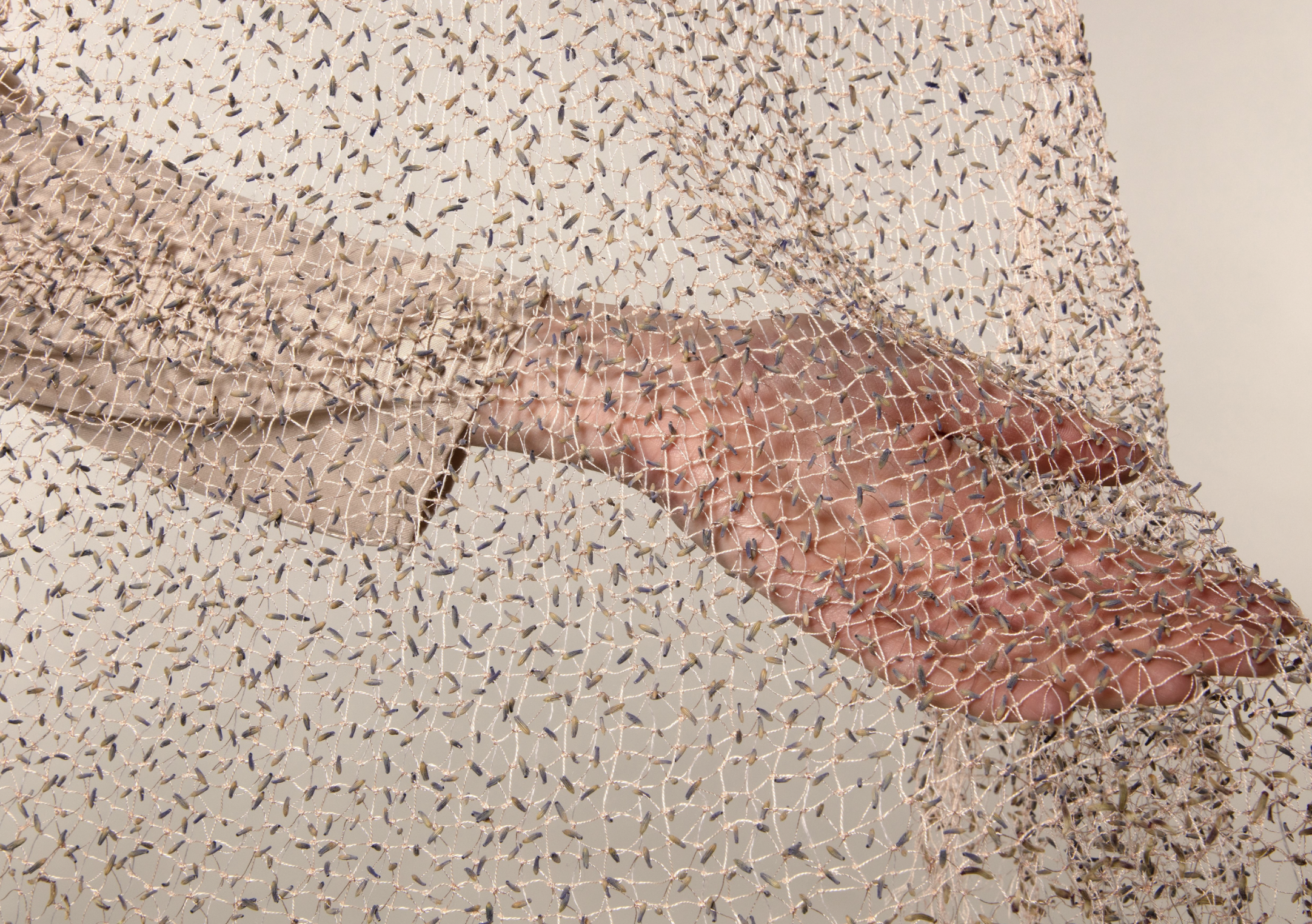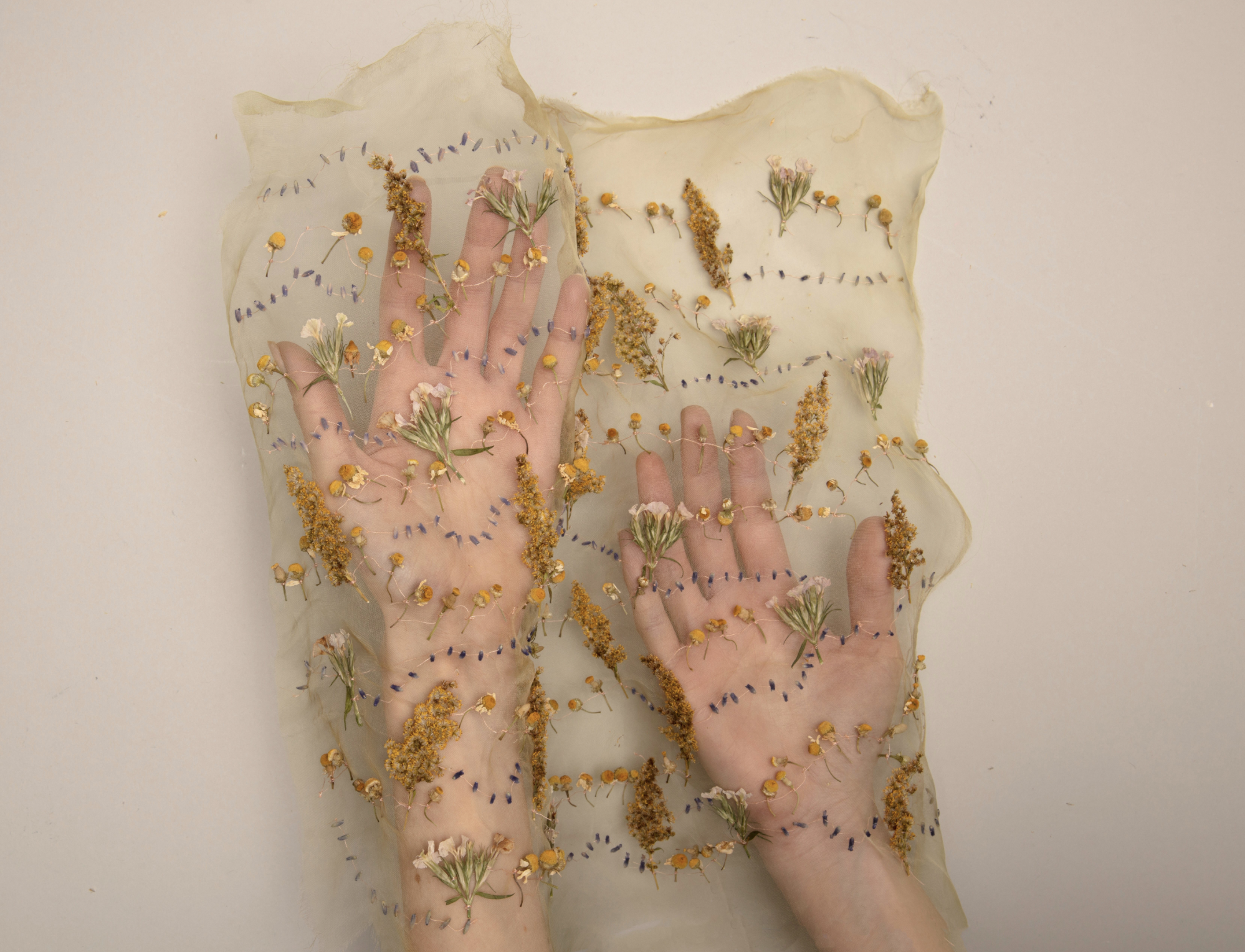Talent Talks: Katerina Knight
British textile-multi-talent Katerina Knight finished her MA Textile Design at the Royal College of Art last summer, specialising in one-of-a-kind textile artefacts that reimagine ancient hand-making techniques.
Katerina Knight - Portrait - Image by Ruby Pluha
Could you please introduce yourself?
I am an English Textile Practitioner, artist, maker and writer. Specialising in one-of-a-kind textile artefacts that reimagine ancient hand-making techniques; such as needle lace and natural dye. After training as a Print Designer at The Glasgow School of Art, I spent several years working in the luxury fashion sector. But felt a growing unease and resistance to the structures that uphold the fashion system. In 2021 I was awarded the Burberry Design Scholarship to return to my studies, completing a master's in textiles at the Royal College of Art London. I realigned my practice, forming a binding thread between my making and our earth, and now, share narratives of personal and ecological healing through slow textile craft.
Having graduated recently, how do you look back on your studies?
Returning to my studies offered me a precious period of time to reconnect with both myself and my craft. When operating within a fast-paced industry such as fashion, it can be very easy to become adrift and feel a disconnect from your own philosophy. So taking two years, for complete creative immersion within my own practice, research and process of making was incredibly nourishing for my soul. Through the RCA I found the confidence to take ownership for the sacred value of my craftsmanship. And alongside others, we created a community, a shared space of safety, a space where we nurtured and encouraged each other's practices to grow.
Katerina Knight - The Healing Lace
Could you please tell us something about your graduation collection/project?
My Material Memoir: Hands Can Heal - Cloth Can Care is a project born out of the personal toxicities I faced from working within the industry and the urgent need to slow down and heal, following a time of personal challenge- in recovery from a physical and mental illness. Drawing upon the natural rhythms of the Earth as a guiding light; I worked with living materials- homegrown, locally foraged and collected over time.
From the act of growing, through to the process of making I learnt presence and I learnt patience. Through making solely with my hands these laborious processes demand time. Much like making, healing too is a slow and patient act. This work honours both time and craft that transcends textiles. Displaying the healing of our Earth, and repairing the damage we have inflicted, will too take time, presence and patience.
The principal work from the collection The Healing Lace is a handmade needle lace made of three varieties of lavender, grown on my allotment in Worcestershire. Harvested over two summers- 2021 and 2022. Each dried and preserved seed of lavender has been hand threaded on silk and linen, for over 250 hours of hand threading.
Katerina Knight - The Healing Lace (detail)
Which materials, techniques, programmes and/or applications are you mostly interested in?
Each artefact in the collection has been handmade, reimagining traditional techniques of natural dye, lacemaking and hand embroidery. Carving an intimate relationship between my hands, my materials and our Earth I explore the expansive possibilities I can create for textiles using only my hands. Each technique is slow and considered, but repetitive. A set of ritual acts.
My interest in lace work stemmed from a period in 2021 working closely with The Lace Guild in Stourbridge, an educational charity that houses a museum, archive and library. Engaging with textile archives and looking at ways to reconnect ageing British crafts to current textile and fashion systems is incredibly important to me.
From the act of growing my own textile materials, I connected with the organic transitions of nature. Both an avid gardener and maker, the slowness of growing and the repetition of weeding holds a mirror to the steady and repetitive act of hand stitch. The relationship between growing and sewing is deeply intertwined. Both are incredibly nurturing when you invest patience and time. And then gradually, what evolves, is something of great beauty.
None of the techniques I now work with I believe to be technically demanding or highly innovative per se. But what they do demand of me is time. Perhaps an entity in today's accelerated society we take for granted.
Katerina Knight - The Confession Curtain
The exhibition you are a part of looks into the meaning of regeneration. What does regeneration mean to you and your work?
My master's collection is a response to my own honest experiences working within the luxury fashion sector, a system that operates in a manner that is relentless, brutal and unforgiving, Not only disregarding the voice and value of materials- but also of makers. A disregard and disrespect for the value of those operating within this system- both their craft and their personal well-being. Fashions’ unsustainable operations thus not only cause ecological damage but too damages human existence. Whilst my graduate work started as an attempt to personally heal myself from this distress I experienced. Now, following two years of healing, this is a work that speaks beyond my personal healing and presents the urgent need for greater dialogues of human care to be reflected within the fashion industry today.
Whilst the word regeneration, may be considered as a means of looking forward, looking toward a more progressive future, for me in order to move forward I believe we must first look back. I draw upon ancient wisdom and the traditions of artisanal-making techniques. And connecting with the earth in its purest and simplest form, feeling the soil beneath my fingertips I found I was able to regenerate my own soul again, in the most authentic way.
Katerina Knight - Holding a Garden in my Hands
How do you perceive the meaning and importance of community within the fashion field?
For me, community is indicative of a space of safety, where your spirit and the spirit of others feel held and protected. Fashion is an incredibly special tool for allowing individuals to conceive a material world where they feel safe to express their identity freely.
But often, fashion can carry connotations of competition and rivalry. ‘Community’ is a place for shared knowledge and shared experiences. I believe when we stop taking ownership of knowledge, pause, and reflect on the ancient wisdom that has transcended generations and gifted us with such beautiful skills, materials and processes then we understand, it is our responsibility to continue the preservation and dissemination of this knowledge. The fashion community must come together, work in harmony and continue the cycle of craft.
NOoF: How do you view the future of fashion? And your own role therein?
At present, I am still unsure of whether there is a place for my practice within the wider fashion landscape. Fundamentally, I strongly disagree with the unsustainable pace it operates, but sadly this is a speed that dominates the industry, making it incredibly difficult for slower fashion perspectives to be seen and heard and continue to exist sustainably. I think that there is a lot more work that needs to be done before this is a system I feel I can morally operate within again.
I feel incredibly grateful to have found a space within smaller, artisanal fashion circles where my voice is cherished and appreciated. I hope in continuing to be a part of conversations that are guiding fashion towards another way of ‘being’, moving with care and compassion, akin to Earth. Then maybe, in time my practice can hold a space within fashion again.
Katerina Knight - The Healing Lace - Image by Ruby Pluhar





